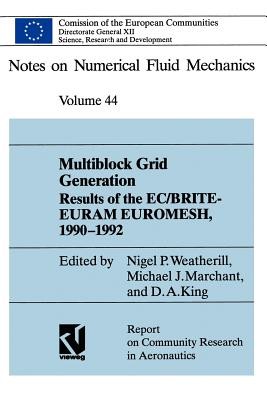
- We will send in 10–14 business days.
- Publisher: Vieweg+Teubner Verlag
- Year: 1993
- Pages: 331
- ISBN-10: 3528076445
- ISBN-13: 9783528076443
- Format: 15.6 x 23.4 x 1.8 cm, softcover
- Language: English
- SAVE -10% with code: EXTRA
Multiblock Grid Generation (e-book) (used book) | bookbook.eu
Reviews
Description
Computational Fluid Dynamics research, especially for aeronautics, continues to be a rewarding and industrially relevant field of applied science in which to work. An enthusiastic international community of expert CFD workers continue to push forward the frontiers of knowledge in increasing number. Applications of CFD technology in many other sectors of industry are being successfully tackled. The aerospace industry has made significant investments and enjoys considerable benefits from the application of CFD to its products for the last two decades. This era began with the pioneering work ofMurman and others that took us into the transonic (potential flow) regime for the first time in the early 1970's. We have also seen momentous developments of the digital computer in this period into vector and parallel supercomputing. Very significant advances in all aspects of the methodology have been made to the point where we are on the threshold of calculating solutions for the Reynolds-averaged Navier-Stokes equations for complete aircraft configurations. However, significant problems and challenges remain in the areas of physical modelling, numerics and computing technology. The long term industrial requirements are captured in the U. S. Governments 'Grand Challenge' for 'Aerospace Vehicle Design' for the 1990's: 'Massively parallel computing systems and advanced parallel software technology and algorithms will enable the development and validation of multidisciplinary, coupled methods. These methods will allow the numerical simulation and design optimisation of complete aerospace vehicle systems throughout the flight envelope'.
EXTRA 10 % discount with code: EXTRA
The promotion ends in 20d.23:01:23
The discount code is valid when purchasing from 10 €. Discounts do not stack.
- Publisher: Vieweg+Teubner Verlag
- Year: 1993
- Pages: 331
- ISBN-10: 3528076445
- ISBN-13: 9783528076443
- Format: 15.6 x 23.4 x 1.8 cm, softcover
- Language: English English
Computational Fluid Dynamics research, especially for aeronautics, continues to be a rewarding and industrially relevant field of applied science in which to work. An enthusiastic international community of expert CFD workers continue to push forward the frontiers of knowledge in increasing number. Applications of CFD technology in many other sectors of industry are being successfully tackled. The aerospace industry has made significant investments and enjoys considerable benefits from the application of CFD to its products for the last two decades. This era began with the pioneering work ofMurman and others that took us into the transonic (potential flow) regime for the first time in the early 1970's. We have also seen momentous developments of the digital computer in this period into vector and parallel supercomputing. Very significant advances in all aspects of the methodology have been made to the point where we are on the threshold of calculating solutions for the Reynolds-averaged Navier-Stokes equations for complete aircraft configurations. However, significant problems and challenges remain in the areas of physical modelling, numerics and computing technology. The long term industrial requirements are captured in the U. S. Governments 'Grand Challenge' for 'Aerospace Vehicle Design' for the 1990's: 'Massively parallel computing systems and advanced parallel software technology and algorithms will enable the development and validation of multidisciplinary, coupled methods. These methods will allow the numerical simulation and design optimisation of complete aerospace vehicle systems throughout the flight envelope'.


Reviews